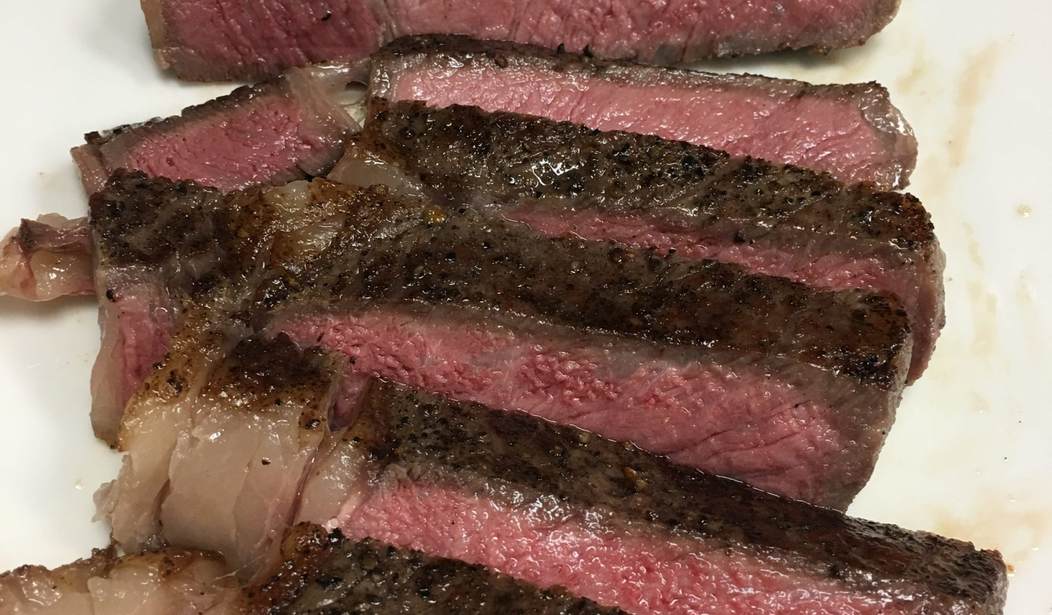What happens when high tech meets the kitchen? Combining technology with cooking is one of the areas being addressed by several startups in Silicon Valley.
June Oven
The June Oven was founded by two engineers, Matt Van Horn, a co-founder of Lyft, and Nikhil Bhogal, who worked for Apple. They created a beautiful looking compact countertop convection oven, about the size of a microwave, 22 by 13 by 18 inches.
The oven is packed with technology, including a computer, WiFi, a camera, scale, color display, and advanced heating elements. It has the ability to figure out what you’re cooking and determine the correct temperature and time. The company describes it as “solving the problem that has challenged cooks for years — unpredictable cooking. Now you can cook your food exactly how you want it, no guesswork required.”
The camera and software identify the food you place inside, whether it’s cookies, fish, bacon, or meat, and the screen will display what it thinks it is or allow you to enter your choice. It then sets the temperature and cooking time, and prepares the food. An app connects to the oven to allow you to monitor progress and even see your food cooking.
I heard about this from a friend, Vikki Pachera, a Silicon Valley tech recruiter, who told me, “I love the June Oven, it takes the guesswork out of cooking, whether I’m pulling together a quick meal or taking on a challenging dinner,” she said. “It’s full of advanced technology like food recognition and live streaming, but unlike most other products, I never feel like I am wrestling with the technology. It’s in the background, there to make life easier. ”
Technology, in this case, is not inexpensive. The oven sells for $1495.
Juicero Juicer
The Juicero cold press juicer is another Silicon Valley creation that’s recently gotten into hot water. It’s a $400 juice machine (reduced from the original $700) that was invented by Doug Evans, the founder of Organic Avenue, a chain of juice bars that sells cold press drinks to the health-conscious. It received $120 million in Silicon Valley venture funding, including Kleiner Perkins Caufield & Byers and Google.
The Juicero is an Internet-connected appliance that turns packets of vegetables and fruits costing $5 to $8 each into healthy juice drinks in your home. Think of it as a Keurig machine for juice. And it’s the disposable part that has gotten the investors excited. The machine is an expensive, complex design because it supposedly needs to apply a huge force to crush the juice packs.
But recently some investors discovered that you don’t require the hefty machine to squeeze the juice packs. They found that the packs can be squeezed using your hands to obtain the same results. These findings were revealed in an embarrassing article on Bloomberg that explained, “Bloomberg performed its own press test, pitting a Juicero machine against a reporter’s grip. The experiment found that squeezing the bag yields nearly the same amount of juice just as quickly—and in some cases, faster—than using the device.”
Cinder Grill
The Cinder is the creation of a young entrepreneur, Eric Norman, and the results of nearly five years of development. It came out of the Silicon Valley incubators Highway 1 and Y-Combinator, and is the result of Norman’s fascination with sous-vide cooking. Sous-vide cooking, popular among some chefs, is cooking food in a plastic bag in a water bath at the same temperature you want the food to reach. While it’s slow process, it ensures that the food will be cooked to the same temperature throughout. But sous vide cooking doesn’t brown the outside and requires a trip to the stove to finish.
The Cinder replicates the sous-vide process but avoids the water, plastic bags, and the oven. It’s a precision grill that looks like a very large panini press, that sits on a counter. You lift up the top, put your food on the grill and close it. It automatically measures the thickness of the food and cooks it exactly to the temperature you set. You can use the controls on the grill or the accompanying app to select the type of food and how you want it cooked.
The app also shows you the cooking progress and alerts you when the food has reached the set temperature. It’s able to precisely cook the food based on computer algorithms that are a function of the food’s thickness, uniformity of the heating elements, and the enclosure that surrounds the food. After the cooking is completed you can sear the food by turning up the grill temperature to 450 degrees.
I tested a beta unit and cooked a swordfish steak to 135 degrees Fahrenheit and Jeff Strauss, a local chef, cooked a thick prime New York sirloin steak to 130 degrees, rare to medium rare. Each took less than an hour and were then seared for a couple of minutes. Both produced perfect results. The swordfish and sirloin were cooked evenly throughout the interior and beautifully seared on the outside.
Cinder is available for pre-order from Indiegogo for about $400.










Join the conversation as a VIP Member